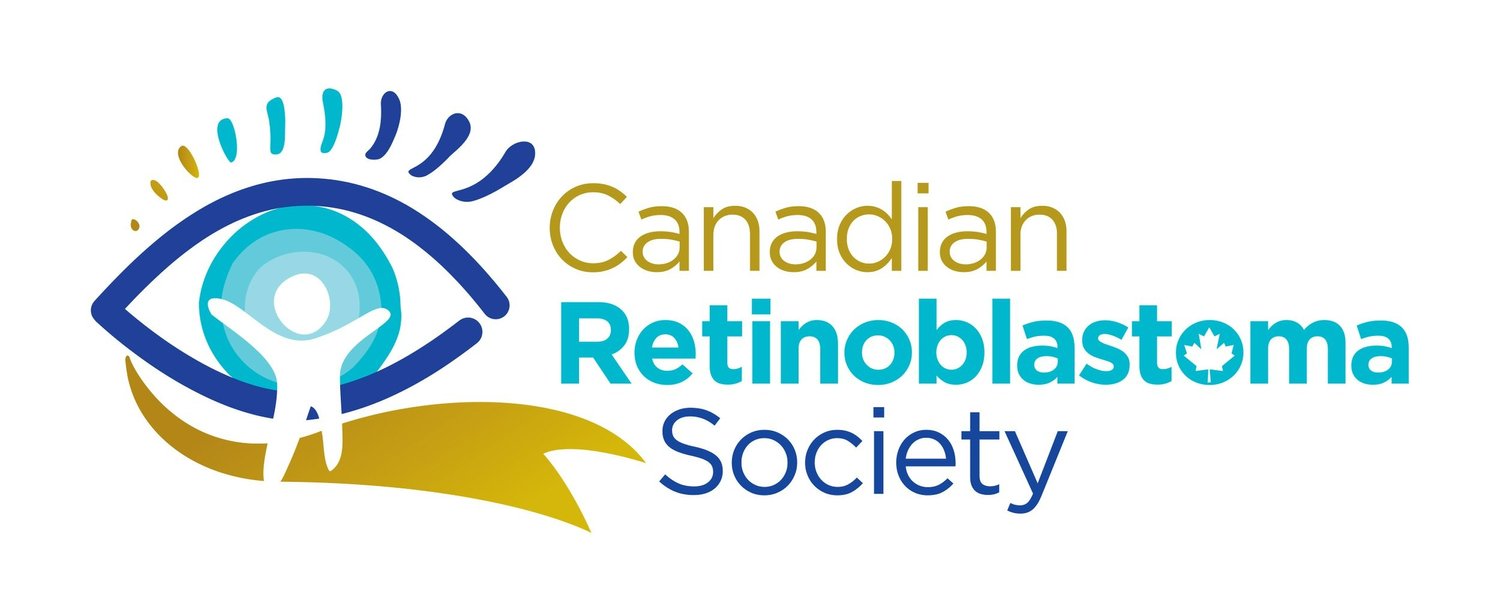Glossary of Commonly Used Terms
We know how hard it is to understand medical language, especially in a time of crisis, so we've put together for you a glossary of commonly used terms to help you through the process:
Retinoblastoma (RB): A rare type of eye cancer that starts in the retina, typically in young children.
Unilateral Retinoblastoma: Retinoblastoma affecting only one eye.
Bilateral Retinoblastoma: Retinoblastoma affecting both eyes.
Leukocoria: A white reflection from the pupil, often referred to as a "cat's eye" reflex, a common sign of retinoblastoma.
Strabismus: A condition in which the eyes are misaligned and do not look in the same direction simultaneously. It can cause one eye to turn inward, outward, upward, or downward, leading to double vision or impaired depth perception. Strabismus can occur intermittently or constantly and may require treatment such as glasses, exercises, or surgery.
RB1 Gene: The gene responsible for the development of retinoblastoma when mutated.
Genetic Testing: Testing for mutations in the RB1 gene, associated with retinoblastoma.
Ocular Oncology: The study and treatment of eye cancers like retinoblastoma.
Monocular vision: Vision using only one eye, limiting depth perception and the field of view.
Medical professionals
Ophthalmologist: Medical doctor specializing in the diagnosis, medical treatment, and surgery of eye conditions.
Ocularist: Specializes in the creation, fitting and maintenance of artificial eyes (not a medical doctor).
Optometrist: Primary vision care provider; diagnoses and manages common eye conditions, but doesn’t perform surgery.
Optician: Trained professional who fits and dispenses eyeglasses and contact lenses based on prescriptions provided by an optometrist or ophthalmologist.
Pediatric Oncologist: Leads the cancer treatment team, specializing in treating cancers in children. They manage chemotherapy and overall cancer care.
Child Life Specialist: Supports the emotional and developmental well-being of the child.
Geneticist: A medical specialist who studies the genetics of diseases like retinoblastoma.
Genetic Counselor: Specializes in assessing the genetic risk of retinoblastoma.
Treatments and procedures
EUA: Examinations Under Anaesthetic
Enucleation: Surgical removal of the eye.
IAC (Intra-arterial chemotherapy): A targeted cancer treatment in which chemotherapy drugs are delivered directly into the artery that supplies blood to the tumor. In retinoblastoma, IAC is used to deliver chemotherapy directly to the eye, minimizing systemic side effects and increasing the concentration of the drug at the tumor site.
Prosthesis: Artificial eye replacement after enucleation.
Cryotherapy: A treatment method that uses extreme cold to destroy abnormal or cancerous cells. In retinoblastoma, cryotherapy is used to freeze and kill small tumors in the eye.
Radiation: A treatment that uses high-energy particles or waves (such as X-rays or gamma rays) to destroy cancer cells. Radiation therapy targets specific areas to shrink tumors or prevent them from growing.
Stem Cell Therapy: A treatment that uses stem cells to regenerate or repair damaged tissues. It’s used in some cancers, but not typically for retinoblastoma treatment.
Spinal Tap: A medical procedure used to collect cerebrospinal fluid (CSF) from the spinal canal to check for infections, cancers, or other diseases affecting the brain and spinal cord.
CT Scan (Computed Tomography): A diagnostic imaging procedure that uses X-rays to create detailed cross-sectional images of the body. It provides more detailed information than standard X-rays and can detect tumors, injuries, or abnormalities. In retinoblastoma, a CT scan may be used to check for calcifications in the eye or to detect the spread of the tumor.
MRI (Magnetic Resonance Imaging): A non-invasive imaging technique that uses powerful magnets and radio waves to create detailed images of the body's internal structures. MRI provides high-resolution images without using radiation. In retinoblastoma, MRI is often used to assess the extent of the tumor, the optic nerve, and surrounding tissues.
International Classification of Retinoblastoma (ICRB)
This is the most widely used system to grade intraocular (inside the eye) retinoblastoma, with tumors classified into five groups (A through E) based on size, location, and the presence of complications like seeding (spread of tumor cells within the eye).
Group A: Small tumors confined to the retina, away from vital structures, with no risk of vision loss. Tumor is 3 mm or less in size.
Group B: Larger tumors or tumors located closer to important structures but still confined to the retina. Tumor is more than 3 mm or is near the fovea or optic nerve.
Group C: Tumors with minimal seeding within the eye but without widespread dissemination. Tumor has localized seeds less than 3 mm from the tumor.
Group D: Tumors with more significant seeding or large tumors that have a higher risk of causing complications, such as retinal detachment. Extensive seeding and possible retinal detachment.
Group E: Advanced tumors with a high likelihood of causing permanent vision loss or eye loss. Tumor fills over half of the eye or involves critical structures.
